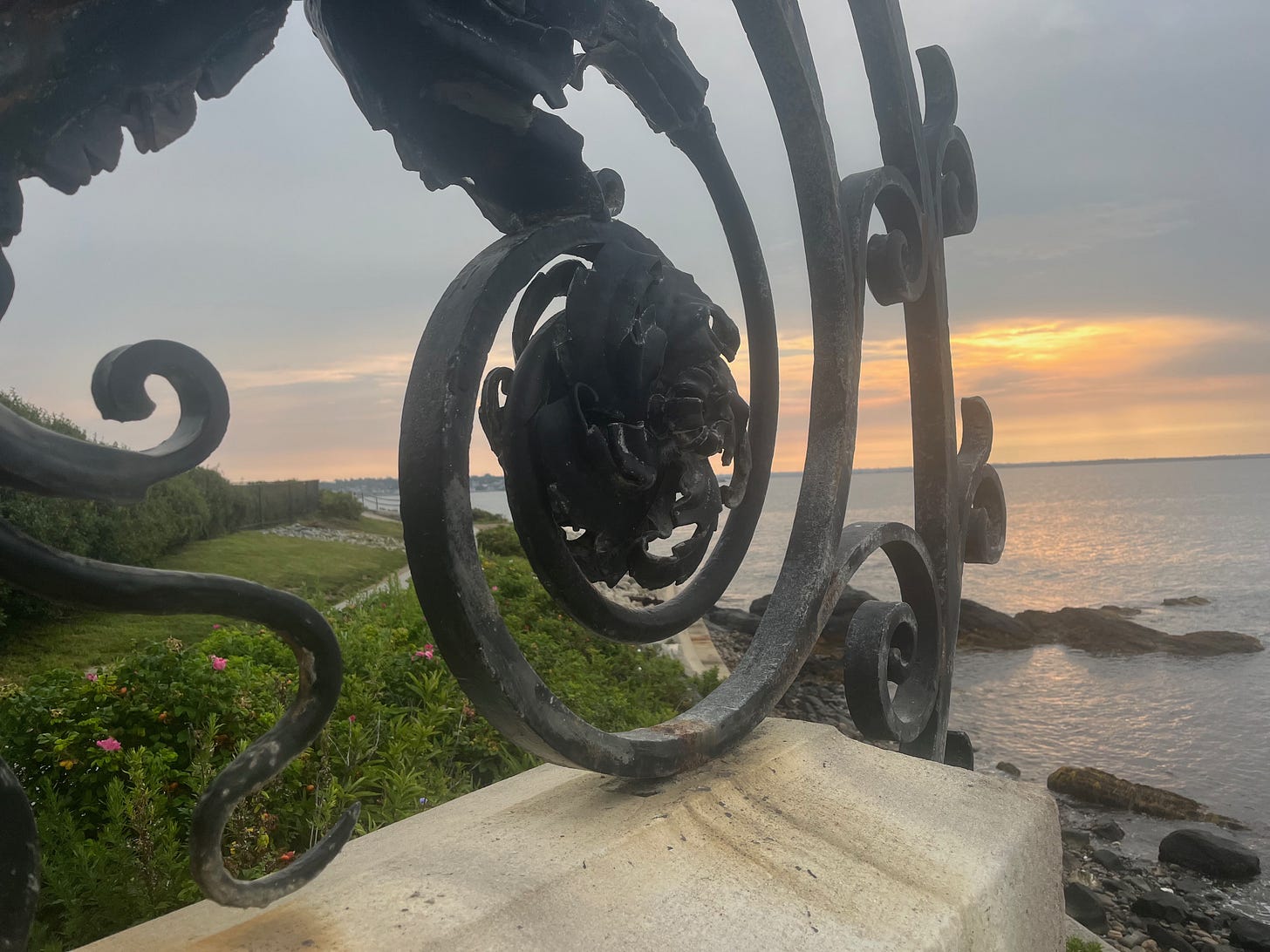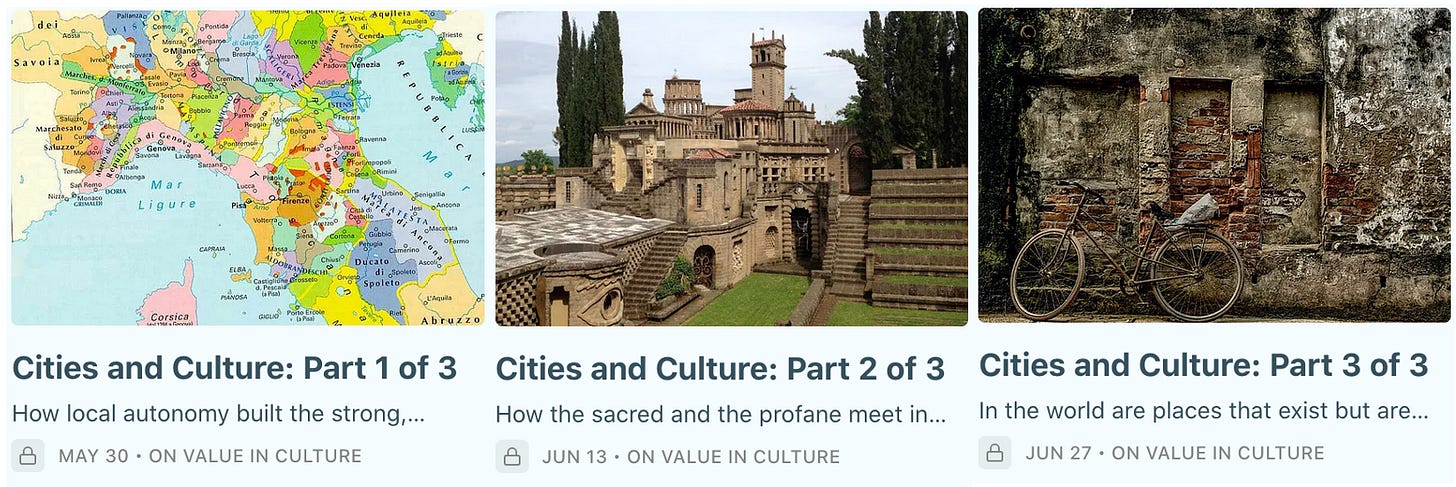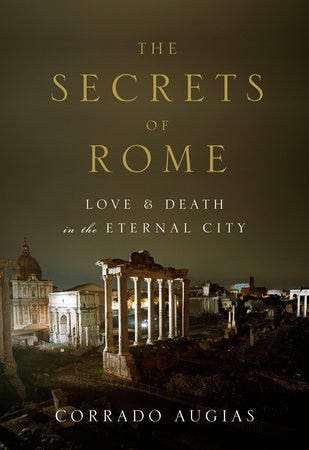Invisible
Our conscious, human perspective is embodied, and so is its value.
In Heart of Darkness Joseph Conrad,1the novelist of man in extreme situations, wrote, “Perhaps all wisdom, all truth, all sincerity are concentrated in that imponderable moment of time when we cross the threshold of the invisible.”
To Marlow, the novel’s protagonist along with Kurtz, the invisible represents the boundary between known and unknown, conscious and unconscious, appearance and truth, rationality and madness, good and evil.
The subtle and mysterious boundary plunges us into the abyss. Along with the heart of Africa, in Congo, the author experienced the heart of evil—everything that is corrupt, nihilistic, malign—and perhaps the heart of man.
Conrad called ‘fidelity’ the barrier man erects against nothingness, against corruption, against the evil that is all about him, insidious, waiting to engulf him, and that in some sense is within him unacknowledged.2
Knowledge of that abyss can help us emerge to the light—but only if we take its lessons. To cross that threshold and learn to see, through the words of writers who guide us on the path of knowledge, also means going beyond appearances.
It means breaking through the veil of habit and indifference so we can explore the reality around us with new eyes and grasp its meaning, and look within, taking an inner journey to reach the essence of things.
Learning to see thus becomes a subversive gesture and an act of responsibility, of listening, of empathy, of openness to others and to mystery. Those who approach the invisible, in fact, can no longer ignore it.
We’re living through a misalignment between techne—our doing—technology—our tools—and human consciousness. The soul, the spirit, along with the moral dimension are immature.
With the help of the arts and literature, many invisible worlds are available to us. To acquire a more conscious and human perspective is a valuable alternative to the detached, nihilistic observer of life some take to protect themselves.
It’s up to us to learn to see the invisible—outside of ourselves, in the world around us and in others, near or far, but also within each of us, “in the inconceivable mystery of a soul that struggles blindly with itself.”
1/5
But first, a round of links. Since the last round-up on fashions, On Value in Culture published:
(🔒) Federico Fellini—A special connection with storytelling and the ultimate change.
(🔒) A 3-part mini-series on Cities and Culture:
Comuni—How local autonomy built the strong, numerous, rich communities that prepared the ground for the Renaissance.
Scarzuola—How the sacred and the profane meet in one man’s folly—the ‘ideal city,’ an adults-only playground in Umbria is a journey within the journey.
Ghost Towns—In the world are places that exist but are not alive— ‘ghost towns’ remain as relics of history, each waiting for its mysterious tale to unfold.
Beauty in the Transient—The spectacular power of architecture in places of arrival and departure by rail across Europe—the continent and beyond.
The Value of Conversation—From fast to slow—how everything is going to change in our social interactions.
(🔒) To Pick the Flowers that Grow in the Midst of Hell—Herman Hesse, the better part of our nature: Our constant conflict between duty and being, obligation and freedom of choice, nature and spirit are profoundly linked.
The Language that Never Dies—And the 650,000 Italian soldiers who said 'no' after September 8, 1943.
(🔒) Cultural Range—The curious phenomenon of how we transmit a way of life through actions and words.
Ferragosto—A great exercise in soft power.
(🔒) Last Judgments—How a story that threatens punishments still captivates humanity.
With many thanks to those who recommend, share, love this work of patience and love. A reminder that some lengthy essays are free to all email subscribers, but then are archived in The Vault (🔒) online.
2/5
Creative work under different regimes. Anne Trubek has written a compelling series on the history of copyright in America. To kick off each essay, she asks a timely question, the answer to which helps us backtrack through time.
These mini-explorations can give us a fairly accurate sampling of American culture and international customs. The study of history is how we turn information into knowledge, by putting facts and decisions into perspective.
Should AI be able to steal books? Are they stealing them?
The writers of the Constitution wanted to encourage Americans to create, but they also felt that the public would benefit from using previous works in new ones. So they wanted a public domain in which the works became common property of all. They saw giving authors this monopoly a tax on the public, and that tax should be limited. There has always been a fundamental tension between the interests of authors and those of readers and future authors. How long the public should be “taxed” by authors continues to change, as we see with today’s very extended length of copyright. As is the question of whether any monopoly is a good thing for the public.
Copyright, Piracy, Tariffs, and... Patriotism?
So an intentional, ideological practice of stealing became codified: “America’s first major domestic publishing venture was a Bible with a false imprint attributing it to the king’s printer in London, and Boston booksellers were still falsifying London and Dublin imprints in the 1760s.”1
Publishers draped this practice with the flag of patriotism: a hunger for printed materials amongst the colonists needed to be met, and could only be so by “freely disseminating knowledge.”
Do You Own The Book You Wrote?
In the 1840s, it would cost you $2.50 to buy a Dickens novel in London. In New York, that same novel would cost you six cents. This is partially why Dickens decided to tour the United States, in 1842: to urge Americans to support international copyright laws, so he would be paid for the copies of his novels Americans bought. What he discovered was that a key reason the tour was so successful—it was packed, night after night, with eager readers—and a key reason reason Dickens was so famous stateside—was because his books were so cheap and plentiful. When he returned home, frustrated at his inability to convince Americans, he wrote a book about his experiences. It was (of course) pirated and reprinted in the US. It sold 50,000 copies in three days. Dickens received $0 for those sales.
In an unrelated article about a recent acquisition of a novel serialized on this platform, Anne say, “Of writers we have plenty; it’s the readers (and those who truly understand and share their reading) we should be looking towards.”
I agree wholeheartedly.
3/5
This summer I’ve been binge-watching an Italian program on cultural channel La7 titled La Torre di Babele (the Tower of Babel), an intelligent review of culture and books hosted by Corrado Augias.3
The program has helped me fill significant holes in my knowledge about historical events of the late eighties and nineties, before I could get information online. His guests range from philosophers to historians, psychologists, researchers, many of whom are also writers.
I’ve come to appreciate his conversational style and verve. So much so that I turned to the books he authored during his long career. One in particular deserves attention. The Secrets of Rome: Love and Death in the Eternal City4, a review of twenty-seven centuries of Roman history.
Through Augias, an attentive and knowledgeable observer, I’ve learned that
“Rome will never be the city of order, of symmetry, of the clear unfolding of events according to a plan, the coherent outcome of a project. If the history of mankind is nothing but violence and din, Rome has been the mirror of this history over the centuries, capable of reflecting every detail with painful fidelity, including those from which one would willingly avert one’s gaze.”
History, geography, anthropology, art, archaeology, cinema, architecture, politics, urban planning, collecting... and more. As only a native could do, Augias selects and curates the stories that he deems befitting of the city’s personality.
Rome has as many faces as it has centuries of existence. It’s a jumble of stories and existences, which have left their lasting mark on its face. I’ve been to Rome a few times over the years, once with my mother to meet friends in the city. But, thought I saw the city with affection, I never saw it with such crispness.
Augias transmit his love for the city, for its streets and alleys, its little corners and its little churches lost in the meanders of the various neighborhoods. It’s like sitting down with a friend from Rome over aperitivo or coffee and hearing some of its stories.
If you’ve been to Rome in the recent past, you’ll know that the city is chaotic, vulgar, full of pigeons and tourists, full of scooters and shouts. Yet, it’s still filled with beauty, art, architecture, and the echos of its past.
If you haven’t been to Rome, you’ll want to go and see the places in person after you read the book.
4/5
I used to watch a lot of films, here’s for example a take-down on scripts that reflect culture and capture the zeitgeist of their times. Lately I’ve been more into series, also because I find it hard to figure out which films from yesteryear to watch.
Hence, I was thrilled to come across a series of Criterion Closet videos with picks by famous people in film. This one with talented film director Danny Boyle is a treat—a few British gems I had missed.
I love the idea of artists who praise other artists.
‘All that Jazz’ is all that Boyle says. Roy Schneider as Fosse is mesmerizing, the musical sequences are amazing. It seems that most people saw it in their teens. Perhaps worth a re-watch, to put those years in perspective, keep us from adultescence.
5/5
“The closest that Western civilization has come to unity since the Congress of Vienna in 1815 was the week that the Sergeant Pepper album was released.... At the time I happened to be driving across country on Interstate 80. In each city where I stopped for gas or food—Laramie, Ogallala, Moline, South Bend—the melodies wafted in from some far-off transistor radio or portable hi-fi. It was the most amazing thing I’ve ever heard.”
Langdon Winner on The Beatles’ ‘Sgt. Pepper’s Lonely Hearts Club Band,’ from his essay, ‘The Strange Death of Rock and Roll,’ collected in Rock and Roll Will Stand, edited by Greil Marcus, 1969. (via Austin Kleon)
“For a brief while the irreparably fragmented consciousness of the West was reunified, at least in the minds of the young. Every person listened to the record, pondered it and discussed it with friends. While it is no doubt true that I have little in common with the gas station attendant in Cheyenne, Wyoming, we were able to come together to talk about the meaning of A Day in the Life during those few moments in which the oil in my VW was being changed. Perhaps the only thing which is certain to be shared by the young of America (or more significantly, the young of the whole world) in this age of violence and extreme divisions is an uncomplicated knowledge of the songs of rock.”
I shall point out that it was a British band to unite America.
In Le Seuil invisible (the Invisible Threshold, 1913), Gabriel Marcel5 explores religious themes as we consider the sincerity of our choices and the attitudes and temptations that play a role in our motivations as we face challenging life situations.
What happens when our beliefs and theories, especially about religion, morality and politics, come up against situations in life that can test them? How does culture influence belief? The question of faith in the secular world reveals the struggle between inauthentic and authentic existence.
One of the major themes of both his dramatic and philosophical work is that life’s most profound, fulfilling experiences are being compromised more than ever in what he describes as the modern, broken world (le monde cassé), one characterized by alienation, loss of meaning and feelings of despair.
It is up to us to answer these questions on what confers value to our existence, yet is (mostly) invisible.
Close-up with Reality
At the turn of the 17th century, Rome was the place to be if you were an artist. In response to the Counter-Reformation, the Church started to commission new art work it could use as powerful propaganda against the protestant faith.
Conrad (1857–1924), a Polish-born British writer, was fascinated with the individual when faced with nature’s invariable unconcern, man’s frequent malevolence, and his inner battles with good and evil. To Conrad, the sea meant above all the tragedy of loneliness.
What happens when fidelity is submerged, the barrier broken down, and the evil without is acknowledged by the evil within? The question is central to Conrad’s work and makes him a very modern author.
Corrado Augias was born in Rome 90 years ago, on 26 January 1935. A journalist, author, and television host, he served as editor-in-chief and New York correspondent for the weekly L’Espresso and the daily la Repubblica. With a career spanning several decades, Augias has made a significant impact through his contributions to media, literature, and political discourse in Italy. His unique perspective and engaging writing style have solidified his reputation as one of Italy’s foremost intellectuals.
Translated by A. Lawrence Jenkens (Rizzoli Ex Libris, 2014).
Gabriel Marcel (1888-1973), French philosopher and dramatist, belonged to the movement of French existentialism and is one of the most insightful thinkers of the twentieth century. Unlike some of his contemporaries who took existentialism in an atheistic, even nihilistic, direction, Marcel approaches human existence from a theistic perspective, and gives priority to the themes of hope, fidelity and faith in the human search for meaning in a challenging world. Author of seventeen major works of philosophy, Marcel also wrote more than thirty plays, including tragedies and comedies, many of which were staged in theaters in Paris, Germany, Belgium, England, Ireland and the United States.








